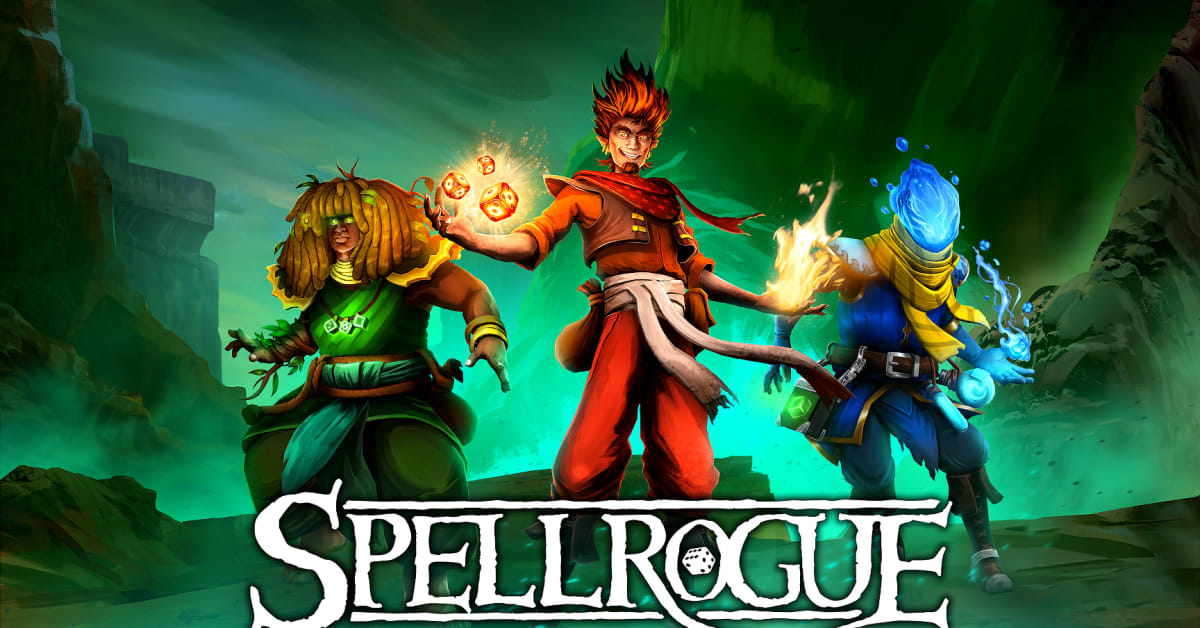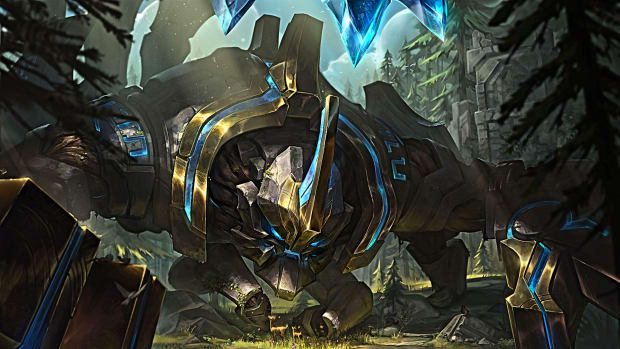
Spellrogue is a roguelike deck-builder that throws cards out of the window
It’s no secret that Slay the Spire has spawned a metric ton of spiritual successors, inspiring a whole generation of developers to try their hand at a roguelike deck-builder – which is fantastic and a little unfortunate at the same time, as fans of the genre are being overwhelmed by titles. Today, you need a strong twist to the formula to stick out from the masses.
Like Breachway, which splices some FTL into the formula, Spellrogue has a unique variation of the regular Slay the Spire recipe to offer, spicing up its gameplay with one of the most notorious friendship-breaking tools in human history: dice.

Early Access will offer three playable characters as depicted on this artwork.
Guidelight Games / Ghost Ship Publishing
Spellrogue’s core gameplay loop of choosing a specific character, the decisions you make about which path to take as you crawl through the dungeon (which features battles, elite encounters, resting spots, events, and shops), the way the turn-based combat progresses – it’ll all feel quite familiar to anyone who’s ever dabbled in the genre, so it’s easy to pick up on what’s going on.
Unlike Slay the Spire, which has you constantly draw hands of cards that determine your actions during a turn, Spellrogue allows you to build up a loadout of spells you’re always going to have available to you. Instead of powering these with some sort of energy system, you throw a couple of dice every turn, which you can then use to “pay” for your abilities.
Some basic offensive spells may require a die showing a number from one to four, while more powerful and complex actions may only go off if you feed them a die with an odd number, or may require a total dice value of ten, requiring you to invest several dice into them. Dice rolls can – and will – screw you over from time to time, just as card draws do, but the game offers plenty of abilities to strategize around that and manipulate dice, from simple re-rolls to adding or lowering their values. You get the same kind of thrill as in other games of the genre as you work your way through the dungeon, improvise, adapt, and overcome.
While there is plenty of variety, Spellrogue’s battles probably feel a bit samey when compared to those in Slay the Spire, where card draw will always influence your approach to an encounter. Since you have set loadouts in Spellrogue and will always try to get the dice to conform to that (what other choice do you have?), that approach remains the same from battle to battle. Unless, of course, you change your loadout.

Loadout changes will be your main source of variety. Spells can also be upgraded by using Shards.
Guidelight Games / Ghost Ship Publishing
Winning battles brings a variety of rewards, such as gold and potions or maybe even artifacts. However, you’re mainly looking for new spells to build up your arsenal. You can unlock more active spell slots during a run and store some spells you’ve picked up in reserve to switch them in later, in case synergies pop up with new arrivals, but overall your “deck” will be a lot smaller than your average Slay the Spire collection. You can swap your loadout around whenever you are on the dungeon map and this active management will provide you with most of the variety you can enjoy in the game. It encourages you to try out different combinations and styles.
It’s a similar story with the progression. Though you can get access to additional content, such as new characters and spells, by simply playing and leveling up, a good amount of these items are locked away behind specific challenges, incentivizing you to try and branch out, adding some goals to your runs that can be completed even if you ultimately fail to reach the end.

Spellrogue offers tons of unlocks, some of which are accessible by completing objectives.
Guidelight Games / Ghost Ship Publishing
Spellrogue looks visually appealing and you always get the information you need during a battle, showing you enemy intents through icons that are explained in detail when you hover over them. I’d like some clarity when it comes to options on the overworld map. For example, you can sell specific spells at event locations from time to time, but it’ll only tell you the spell’s name in that window – so if you don’t have them all in your head, you’ll need to look it up first, which takes clicks and time. If it would show the spell card while hovering over the name in the event window, that’d be neat. These are things the developer duo from Guidelight Games will figure out with time, I’m sure – it’s what Early Access is there for.
Overall, Spellrogue has quite a good amount of content (including a challenging NG+ mode) to offer in Early Access, though the goal is to add to that over the course of development. One of the items on the list is a fourth playable character.
Spellrogue isn’t afraid of presenting a mechanically deep experience, making it a satisfying entry into this highly competitive genre. If you’re an enthusiast and open to playing a game in Early Access, you can purchase it now on Steam.




